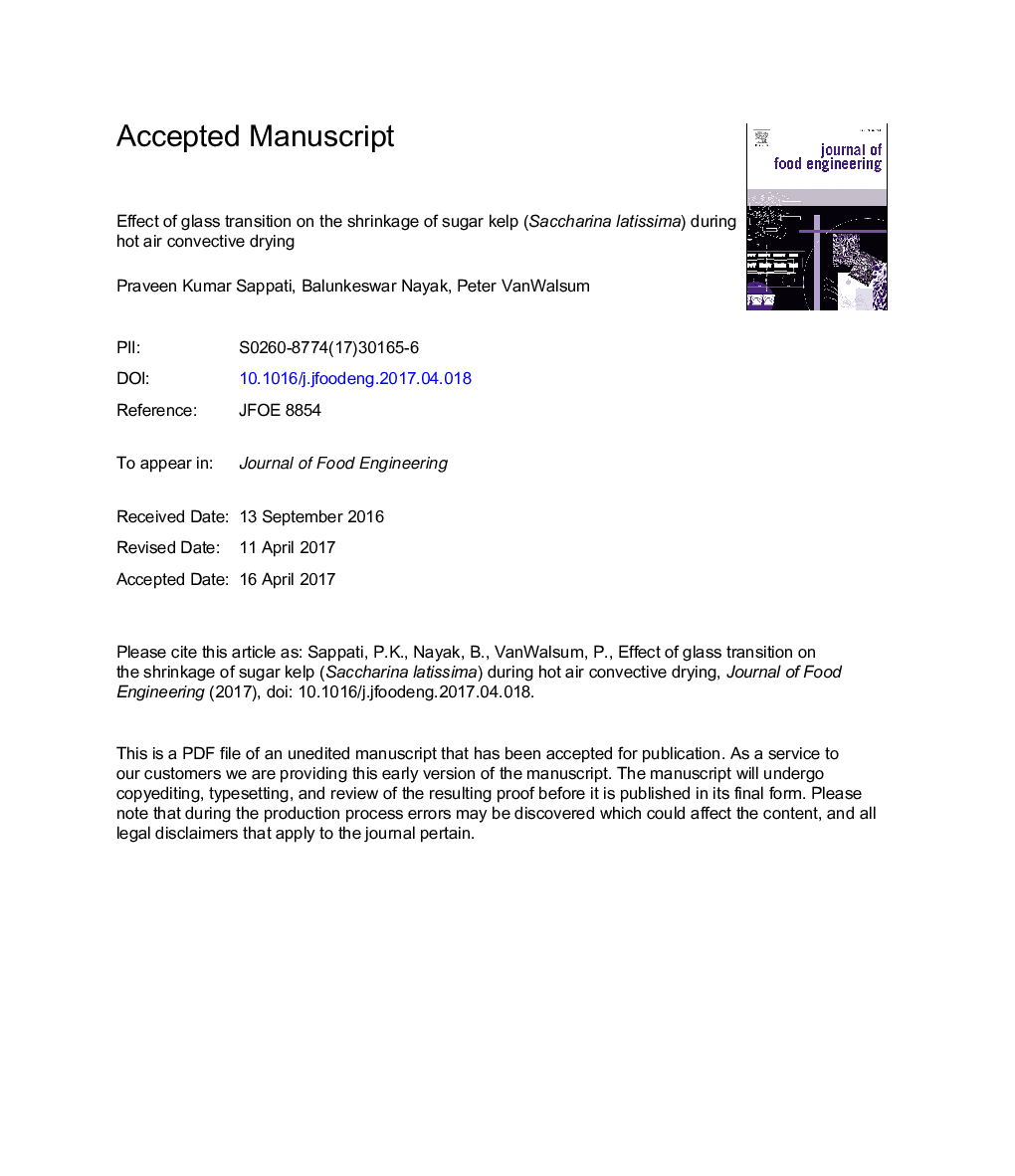| Article ID | Journal | Published Year | Pages | File Type |
|---|---|---|---|---|
| 4908949 | Journal of Food Engineering | 2017 | 59 Pages |
Abstract
Understanding the properties of a biomaterial such as seaweed is important for retaining product quality and improving shelf life through optimized post-harvest processing. An aquacultured sugar kelp (Saccharina latissima) was investigated to determine the effects of glass transition on the shrinkage of dried products. Freeze dried samples of varying moisture content were analyzed for glass transition and freezing point using a differential scanning calorimeter. An image processing algorithm was used for analyzing shrinkage while drying. Drying kinetics were studied at 40 and 70 °C, 10 m/s air velocity and at relative humidity of 25, 50 and 80%. When the drying temperature was 70 °C, above Tg, the shrinkage rate was greater, exhibiting higher matrix mobility in the rubbery state. The glass transition, freezing lines and moisture sorption isotherm can be utilized to extend the shelf-life of both low and high moisture sugar kelp and provide guidelines for other species of seaweed.
Related Topics
Physical Sciences and Engineering
Chemical Engineering
Chemical Engineering (General)
Authors
Praveen Kumar Sappati, Balunkeswar Nayak, G. Peter van Walsum,
